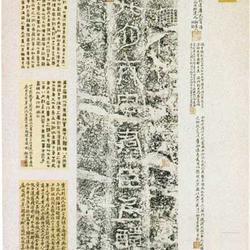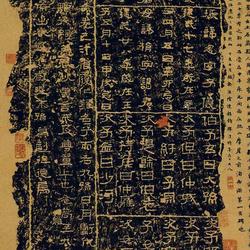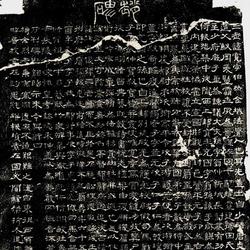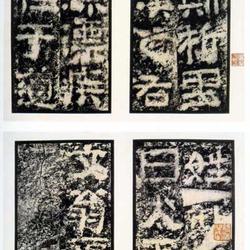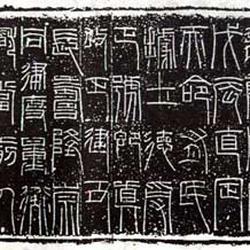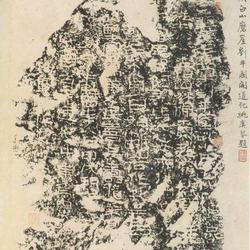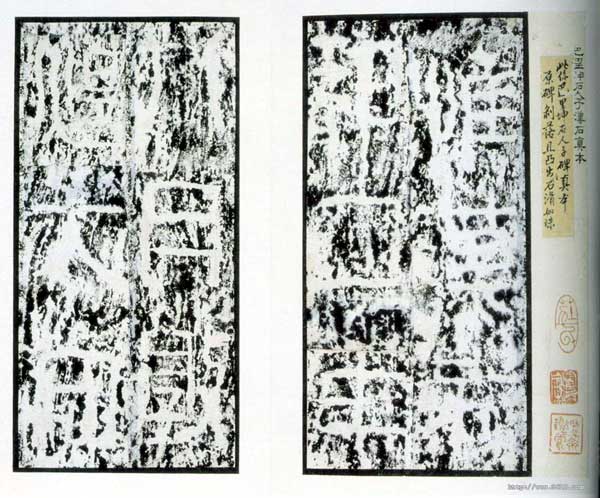
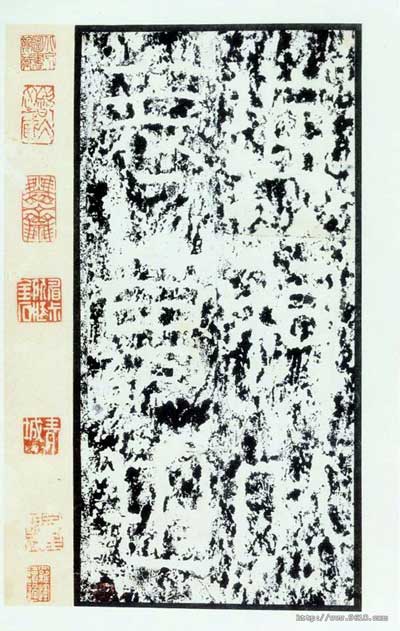
Inscriptions from the Eastern Han Dynasty. The full name is "The Monument of Pei Cen, the Governor of Dunhuang in the Han Dynasty", which was erected in Barkol in the second year of Emperor Shun Yonghe's reign (137). This stele records a successful battle in which Pei Cen, the governor of Dunhuang, defeated the intrusion of King Huyan of the Xiongnu and defeated the entire enemy army. This matter is not recorded in historical books, so this stele has important documentary value. The monument used to be 50 miles west of Barku City in the Xinjiang Uygur Autonomous Region. It is now stored in the Xinjiang Museum and has been broken into several pieces. The monument is 1.39 meters high, 0.61 meters wide, has no forehead, and has 6 lines of official script and 10 characters per line. The stele was discovered by General Yue Zhongqi in the seventh year of Yongzheng reign (1729), and the rubbings were not handed down until the 22nd year of Qianlong reign (1757). This monument is one of the famous Han dynasty steles. The inscription system of this stele is composed of seal script and official script. It is round, strong, ancient and majestic. The font is longer than other stele, broad and generous, and densely organized. Guo Shangxian's "Inscription and Postscript of Fangjian Pavilion" says: "The Han people have many short books, but this stele is uniquely long in structure. The second is "Xili Stele" and "Yige Ode". This stele is particularly round and thin, making it difficult to reach. "

